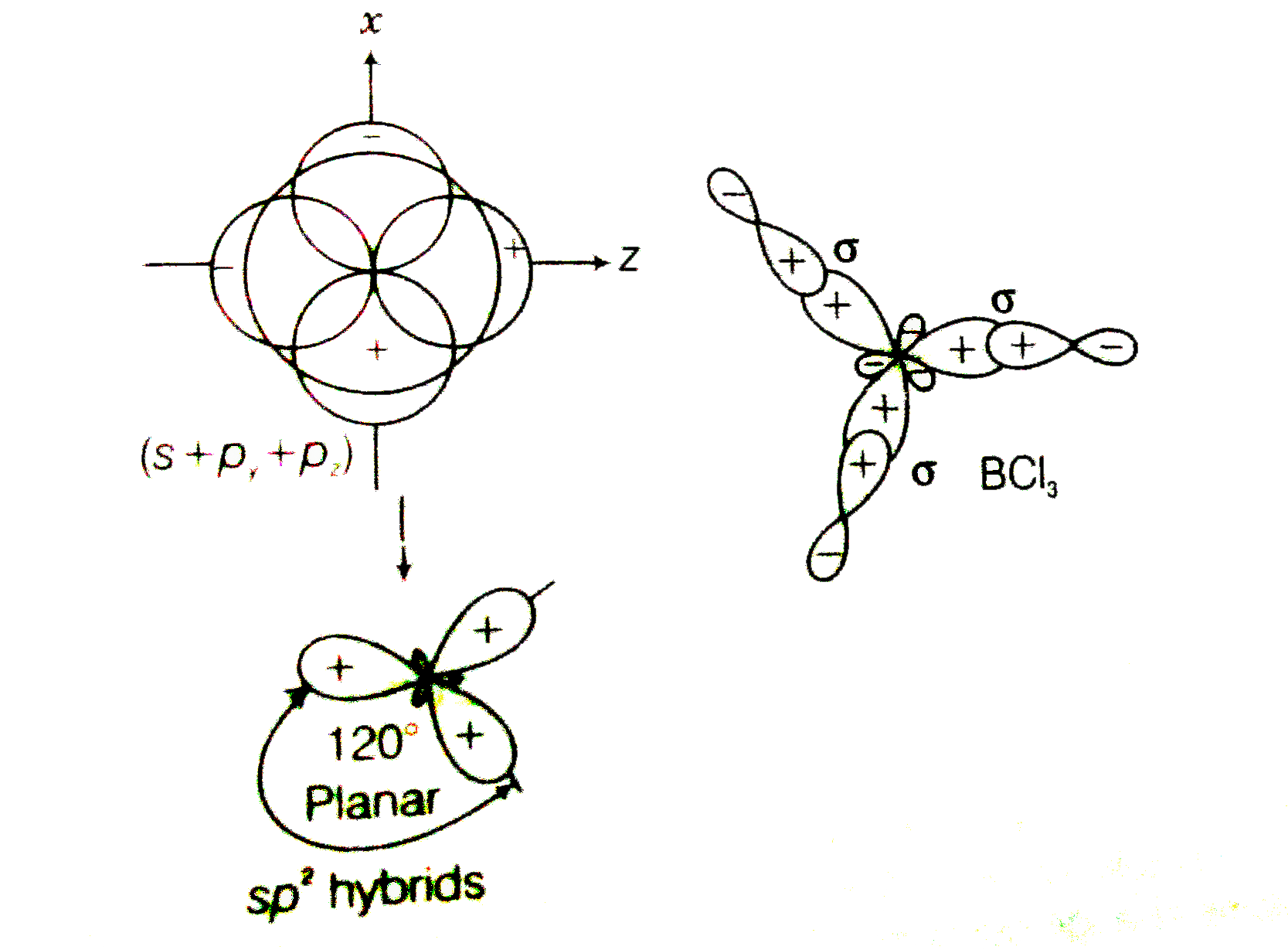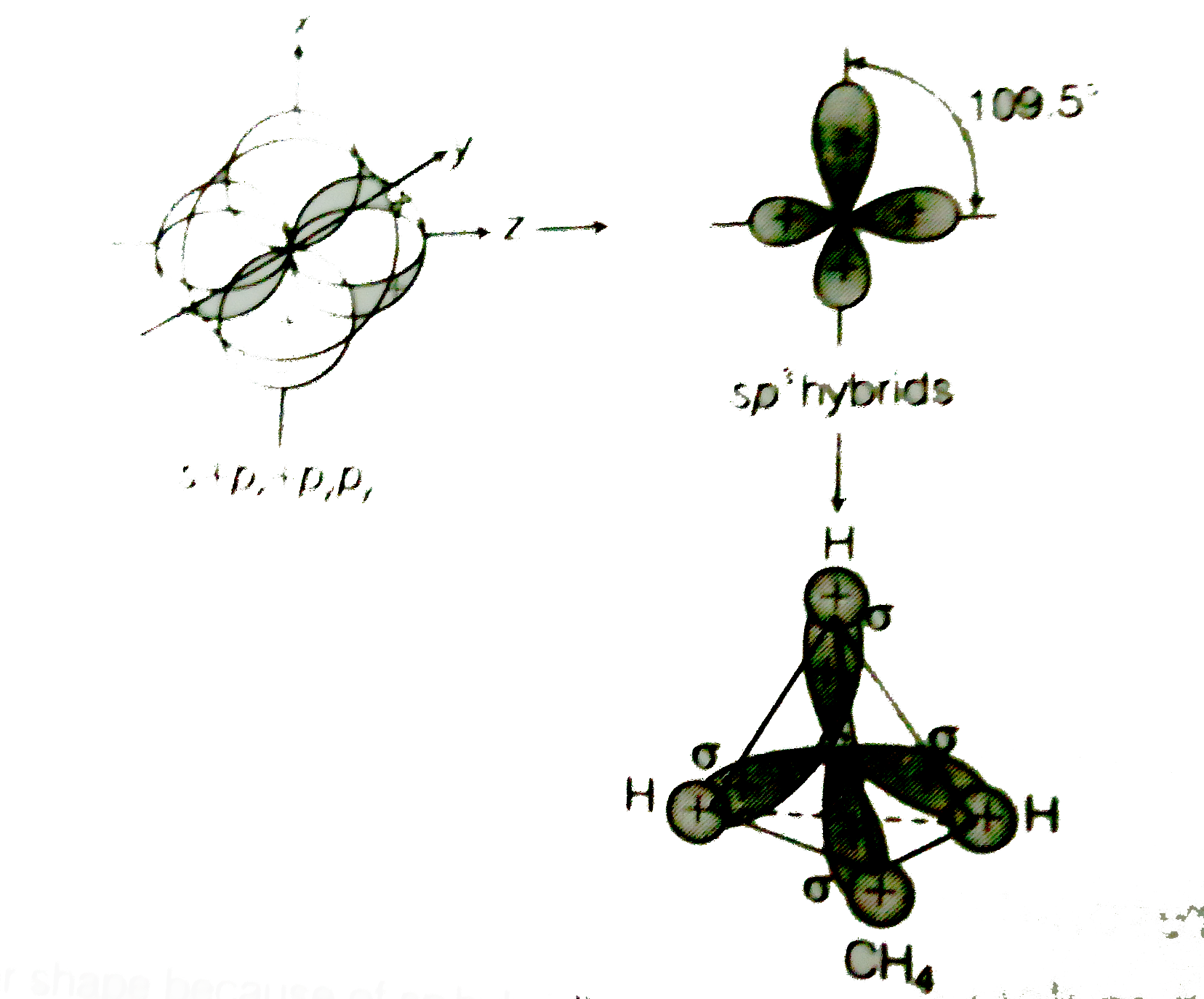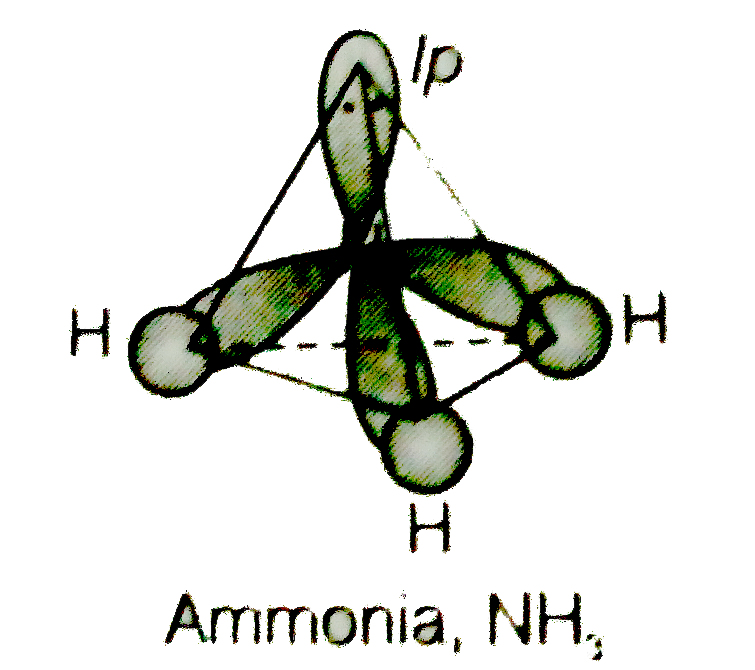Presict the shapes of the following molecules on the basis of hybridisation.
In , the geometry is triangular planar is due to hybridisation.

The shape of is tetrahedral due to hybridisation.

show linear shape because of sp hybridisation.

The geometry of is pyramidal shape and has hybridisation.

Topper's Solved these Questions
- BOOK - NCERT EXEMPLARCHAPTER - CHEMICAL BONDING AND MOLECULAR STRUCTUREEXERCISE - Matching the columns5videos
CHEMICAL BONDING AND MOLECULAR STRUCTURE
- BOOK - NCERT EXEMPLARCHAPTER - CHEMICAL BONDING AND MOLECULAR STRUCTUREEXERCISE - Assertions and Reasons3videos
CHEMICAL BONDING AND MOLECULAR STRUCTURE
- BOOK - NCERT EXEMPLARCHAPTER - CHEMICAL BONDING AND MOLECULAR STRUCTUREEXERCISE - Long Answer type questions9videos
CHEMICAL BONDING AND MOLECULAR STRUCTURE
- BOOK - NCERT EXEMPLARCHAPTER - CLASSIFICATION OF ELEMENTS AND PERIODICITY IN PROPERTIES.EXERCISE - Long answer types question7videos
CLASSIFICATION OF ELEMENTS AND PERIODICITY IN PROPERTIES.
Similar Questions
Knowledge Check
- Question 1 - Select One
The hybridisation in BCl3 is
AspBsp2Csp3DNone of these - Question 2 - Select One
The state of hybridisation of Boron in BCl3 is
Asp3Bsp2CspDsp3d2
Discuss the shapes of the following molecules of the basis of VSEPR theory :
(i) CH4
(ii) PF5
(iii) NH3
(iv) H2O
(v) SF6.View SolutionDiscuss the shape of the following molecules using the VSEPR model:
BeCl2,BCl3,SiCl4,AsF5,H2S,PH3View SolutionDiscuss the shape of the following molecules using the VSEPR model:
BeCl2,BCl3,SiCl4,AsF5,H2S,PH3View SolutionOn the basis of VSEPR theory, predict the shapes of the following molecules/ions?
a. AsF5 , b. SbCl3 , c. F2O , d.H3O⊕
e. HC≡CH , f. ⊕NH4 , g. o−NH2 , h. GeF4View SolutionOn the basis of VSEPR theory, predict the shapes of the following molecules molecules /ions ?
(i)SiF4(ii)NH−2(iii)NH+4(iv)C2H2(v)H3O+(vi)F2O(vii)PCl3(viii)PF5.View Solution2(CH3)2CO+NH3→
View Solution

